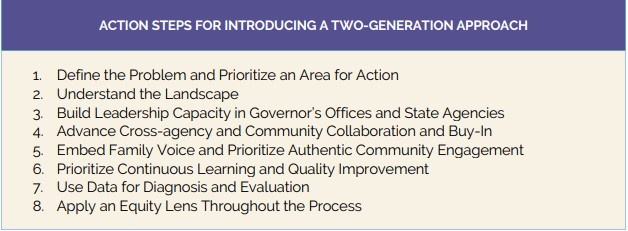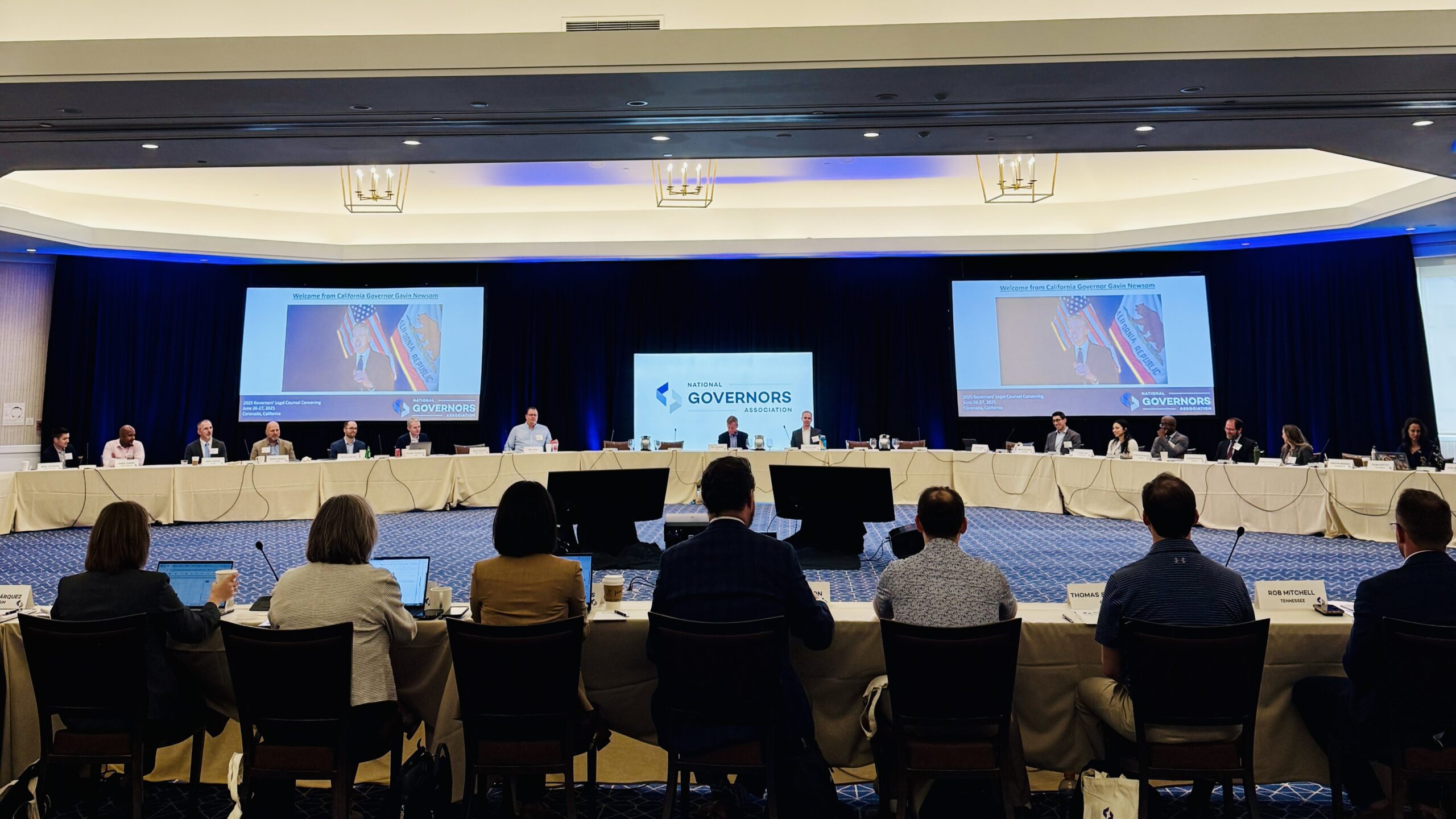Executive Summary
This brief explores the lessons learned from the 2016 Parents and Children Thriving Together: Two Generation State Policy Network (PACTT Network), a collaboration between the National Governors Association (NGA) and the Center for Law and Social Policy (CLASP) with funding from the Doris Duke Charitable Foundation, W.K. Kellogg Foundation and the Annie E. Casey Foundation. Through this initiative, five states explored how to use the two-generation approach to improve their state systems that serve children and parents. This brief summarizes the lessons learned from the two-year initiative and provides a framework to help guide state leaders trying to implement two-generation strategies.
Introduction
In 2016, the NGA Center for Best Practices (NGA Center) partnered with the Center for Law and Social Policy (CLASP) to launch the Parents and Children Thriving Together: Two-Generation State Policy Network (PACTT Network). The PACTT Network was a peer learning network to advance two-generation state policy strategies that promote and work toward the well-being of children and their parents or caregivers simultaneously, and create system change—through regulatory, administrative or legislative means—that alters how families are served by and engage with state government. NGA Center and CLASP provided two years of intensive technical assistance with support from Ascend at the Aspen Institute to five states —Colorado, Georgia, Minnesota, New Jersey and Oregon— to work toward statewide systems and policy change. Each state also received peer mentoring and a $90,000 grant through PACTT.
This collaborative effort provided an opportunity for states to reshape child- and adult-focused services using the two-generation approach as a framework. In supporting the PACTT Network, NGA Center and CLASP intended to learn from the experiences of the PACTT Network states and disseminate the lessons and insights from the different approaches taken to better meet the holistic needs of families. Each state empaneled a team of senior leadership representing key state agencies, county and local stakeholders, and the governor’s office. These five state teams designed and executed plans that reformed policies, cross-trained staff, utilized data in new ways, and streamlined and aligned programs and practices to achieve a range of goals that supported the economic success and wellbeing of families as a whole.
The PACTT Network states designed their plans based on gubernatorial interest, emerging federal and state policy opportunities across relevant issue areas, and on a growing body of research on the importance of two-generation approaches. There is an emerging consensus that a successful two-generation approach should support parents in their dual roles as caregiver and provider, while addressing the care and educational needs of their children. Through improved and better coordinated policies and systems, states seek to improve family economic security; access to quality care and education for children; and access to programs, services and networks to support parents and help them advocate for their children and support their healthy development.
The two-generation strategies supported through the PACTT Network can be applied at the state policy level as a framework for increasing connections between state-administered programs and state systems to improve the lives of families with low incomes. States engaged in the cohort were supported in finding new and different ways to meet the needs of families with low incomes who interact with siloed, often complex systems.














